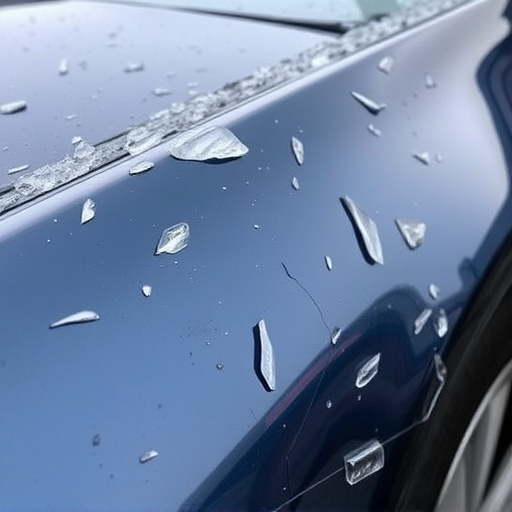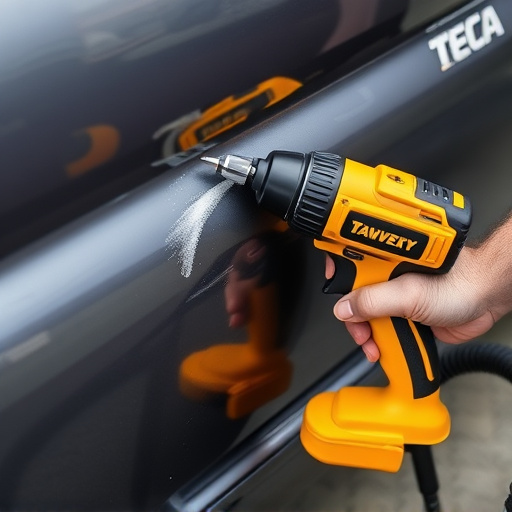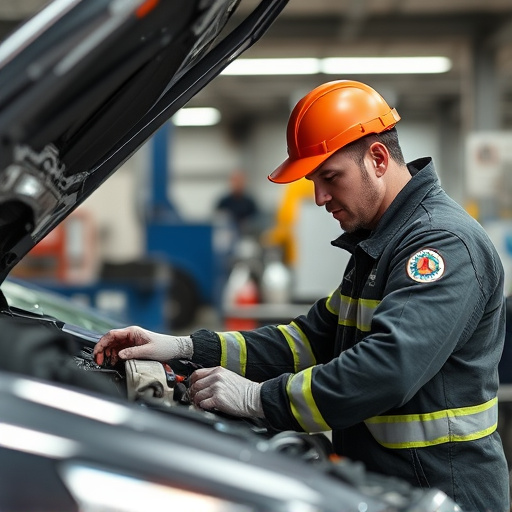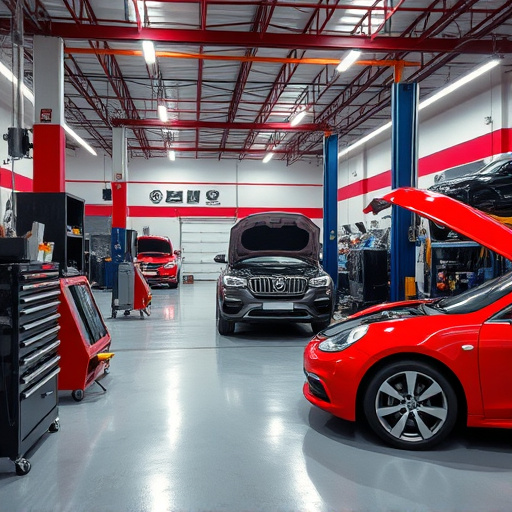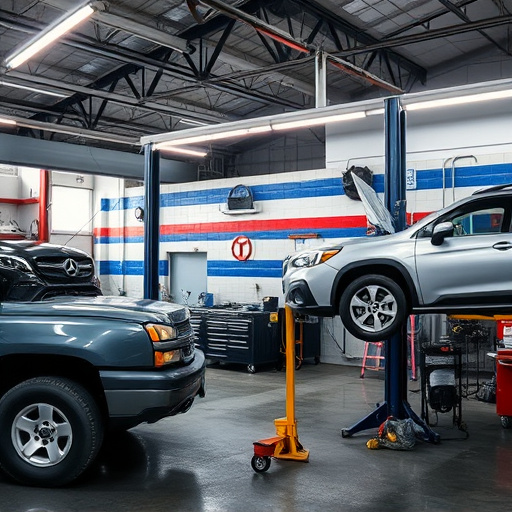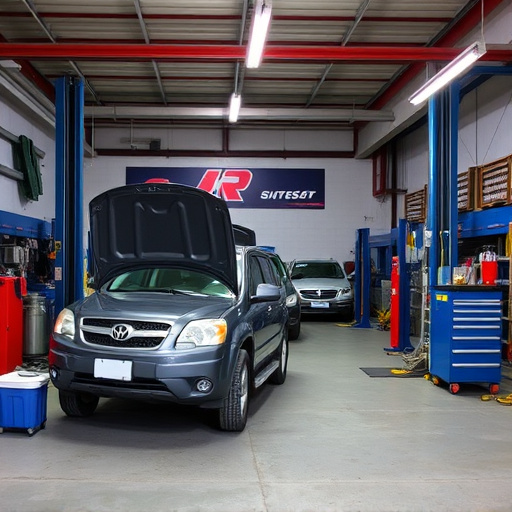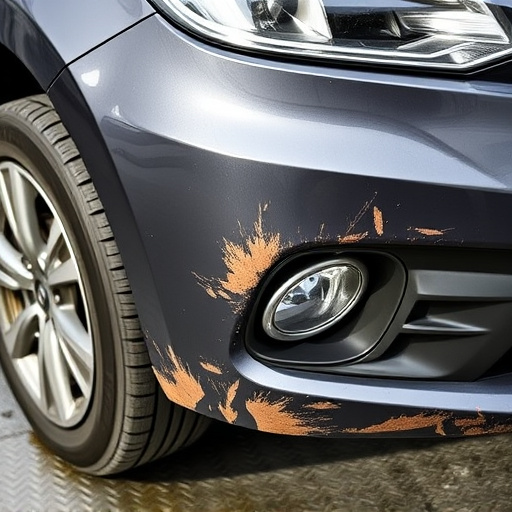Mercedes sensor adjustment is a crucial process for enhancing collision avoidance systems in vehicles, ensuring optimal detection and interpretation of surroundings to prevent accidents. It's vital for modern cars with advanced driver-assistance systems (ADAS), boosting safety, performance, and longevity for Mercedes fleets by optimizing both forward and rear collision avoidance systems. Regular calibration maintains precise hazard detection, reducing accident risks and offering drivers peace of mind.
Mercedes vehicles are renowned for their cutting-edge safety features, with collision avoidance systems playing a pivotal role. At the heart of these systems lies Mercedes sensor adjustment, a crucial process that optimizes sensor performance. This article delves into the intricacies of Mercedes sensor adjustment as a key enabler of forward and rear collision prevention. By understanding how sensors work and the importance of fine-tuning, drivers can harness the full potential of their vehicles’ safety capabilities, enhancing overall driving experience and peace of mind.
- Mercedes Sensor Adjustment: Key to Collision Avoidance
- Forward and Rear Collision Prevention: How Sensors Work
- Enhancing Safety: Adjusting Mercedes Sensors for Optimal Performance
Mercedes Sensor Adjustment: Key to Collision Avoidance
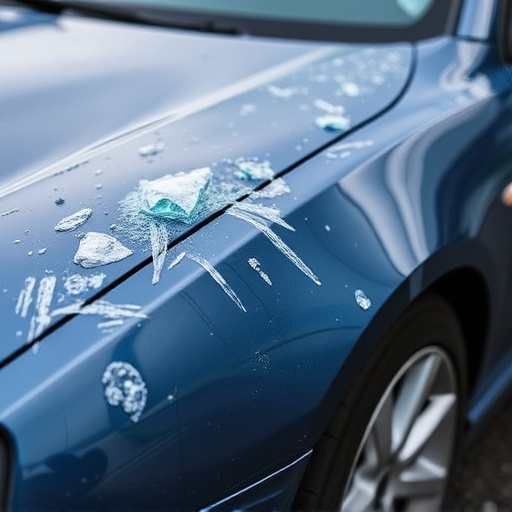
Mercedes Sensor Adjustment: Unveiling the Secret to Collision Avoidance
In the pursuit of enhancing vehicle safety, Mercedes has pioneered the integration of sophisticated sensors as a key component in their collision avoidance systems. The art of Mercedes sensor adjustment plays a pivotal role in ensuring these sensors function optimally. This meticulous process involves fine-tuning various parameters to detect and interpret surroundings accurately, enabling the car to make split-second decisions to avoid potential collisions.
By adjusting these sensors, technicians at a reputable car repair shop can tailor the system’s sensitivity, ensuring it responds appropriately without false triggers. This precision is especially crucial in modern vehicles, where advanced driver-assistance systems (ADAS) are becoming the norm. Whether it’s a classic car restoration or maintaining a modern model, proper sensor adjustment guarantees that the vehicle’s safety features perform at their peak, ultimately protecting drivers and passengers on the road.
Forward and Rear Collision Prevention: How Sensors Work
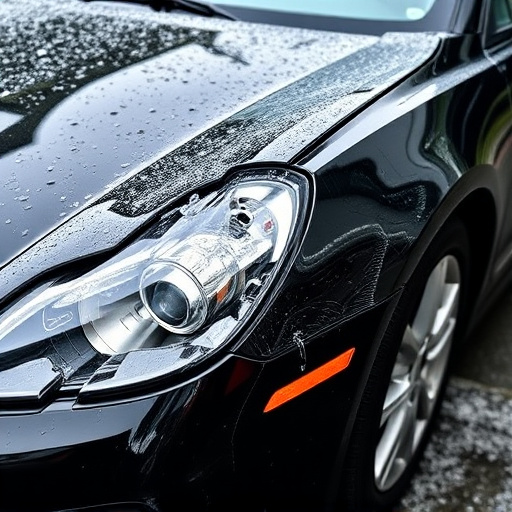
Mercedes sensor adjustment plays a pivotal role in enhancing collision avoidance systems. Forward and rear collision prevention technologies rely on a network of sensors that monitor the vehicle’s surroundings. These sensors, integrated into the vehicle bodywork, continuously scan for potential hazards both ahead and behind. By utilizing advanced technologies such as radar, lidar, and cameras, Mercedes vehicles can detect obstacles, calculate closing speeds, and predict potential collisions.
This real-time data enables the vehicle to take proactive measures. In case of an imminent collision, the auto painting might be adjusted to reduce impact forces or even trigger emergency braking systems. Fleet repair services highlight that proper sensor adjustment is not just a matter of enhancing safety but also ensuring optimal vehicle performance and longevity.
Enhancing Safety: Adjusting Mercedes Sensors for Optimal Performance
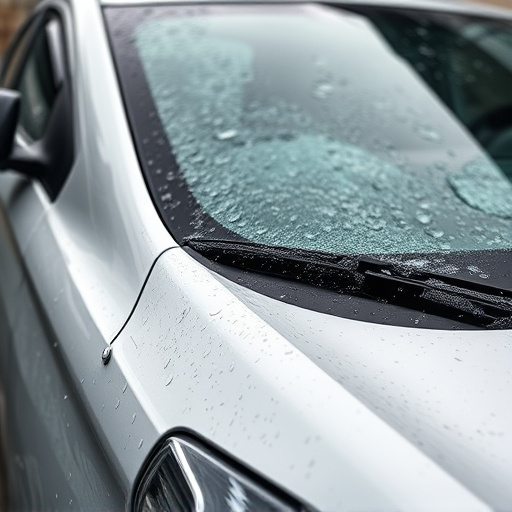
Mercedes sensor adjustment plays a pivotal role in enhancing safety features for both forward and rear collision avoidance systems. These sensors are the eyes and ears of the vehicle, constantly monitoring the surroundings to enable critical safety functions. By calibrating and adjusting these sensors, Mercedes-Benz ensures optimal performance, allowing for precise detection of potential hazards. This fine-tuning is crucial, as it enables the car’s computer to react swiftly and accurately, reducing the risk of accidents.
Regular sensor adjustment is an essential part of auto repair near me services, keeping your vehicle in top shape. It involves meticulous calibration to meet factory specifications, ensuring the sensors function at their best. Moreover, this process can also include checks on related components like tire services and bodywork repairs, all integral to maintaining a safe driving experience. Such proactive maintenance not only extends the life of these safety systems but also contributes to overall vehicle reliability, giving drivers peace of mind on the road.
Mercedes sensor adjustment plays a pivotal role in enhancing vehicle safety, particularly in forward and rear collision avoidance. By meticulously calibrating these sensors, Mercedes cars can achieve optimal performance, ensuring a safer driving experience. This article has explored how sensor adjustments enable effective collision prevention strategies, underscoring the importance of regular maintenance for maximum protection on the road.
